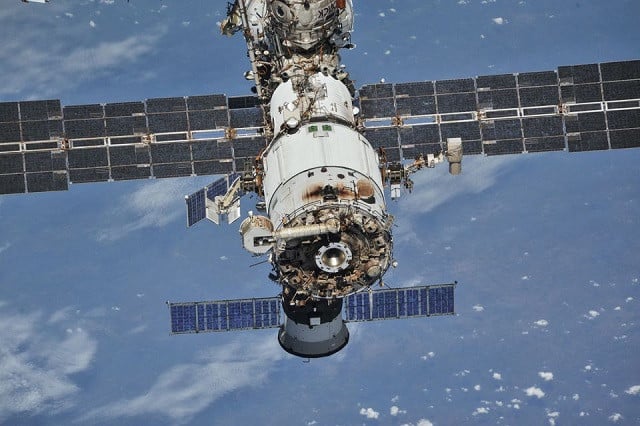
The International Space Station (ISS) was compelled to move out of the way of an Earth-imaging satellite that was directly in its path.
Thrusters on the Progress 83 resupply vessel docked on the ISS, were fired for a little more than six minutes to raise the station's orbit and prevent a collision.
The Argentinian Earth-observation satellite, launched in 2020, Nusat-17, is operated by the geospatial data company Satellogic. Dr. Jonathan McDowell, astronomer and astrophysicist at the Harvard–Smithsonian Center for Astrophysics, tweeted the Nusat constellation is one of several whose orbits are slowly encroaching on the ISS's orbit.
Orbital decay: the Satellogic constellation is only one of a number of Earth observing constellations with multiple satellites entering the ISS orbital height regime. Im magenta, Nusat-17 which was the cause of yesterday's ISS dodge manuever pic.twitter.com/OM0mcToe0p
— Jonathan McDowell (@planet4589) March 7, 2023
Read: Apple backs new music startup
Maneuvers to avoid collision with ISS is uncommon as the space station has already made a total 32 course corrections to avoid satellites and trackable space debris since 1999, according to a 2022 NASA report.
Just last year two path corrections were made by the ISS to avoid debris flying from the Cosmos 1408 satellite, which Russia destroyed in an anti-satellite (ASAT) weapons test in November 2021, Space reported.
This time the station received initial alerts for the potential collision approximately 30 hours ahead of the satellite's projected closest approach.
1730806656-0/BeFunky-collage-(23)1730806656-0-405x300.webp)








1730625796-0/Copy-of-Untitled-(13)1730625796-0-270x192.webp)
-in1715608548-0/World-Artificial-Intelligence-Conference-(WAIC)-in1715608548-0-270x192.webp)




1730706072-0/Copy-of-Untitled-(2)1730706072-0-270x192.webp)
COMMENTS (1)
Comments are moderated and generally will be posted if they are on-topic and not abusive.
For more information, please see our Comments FAQ